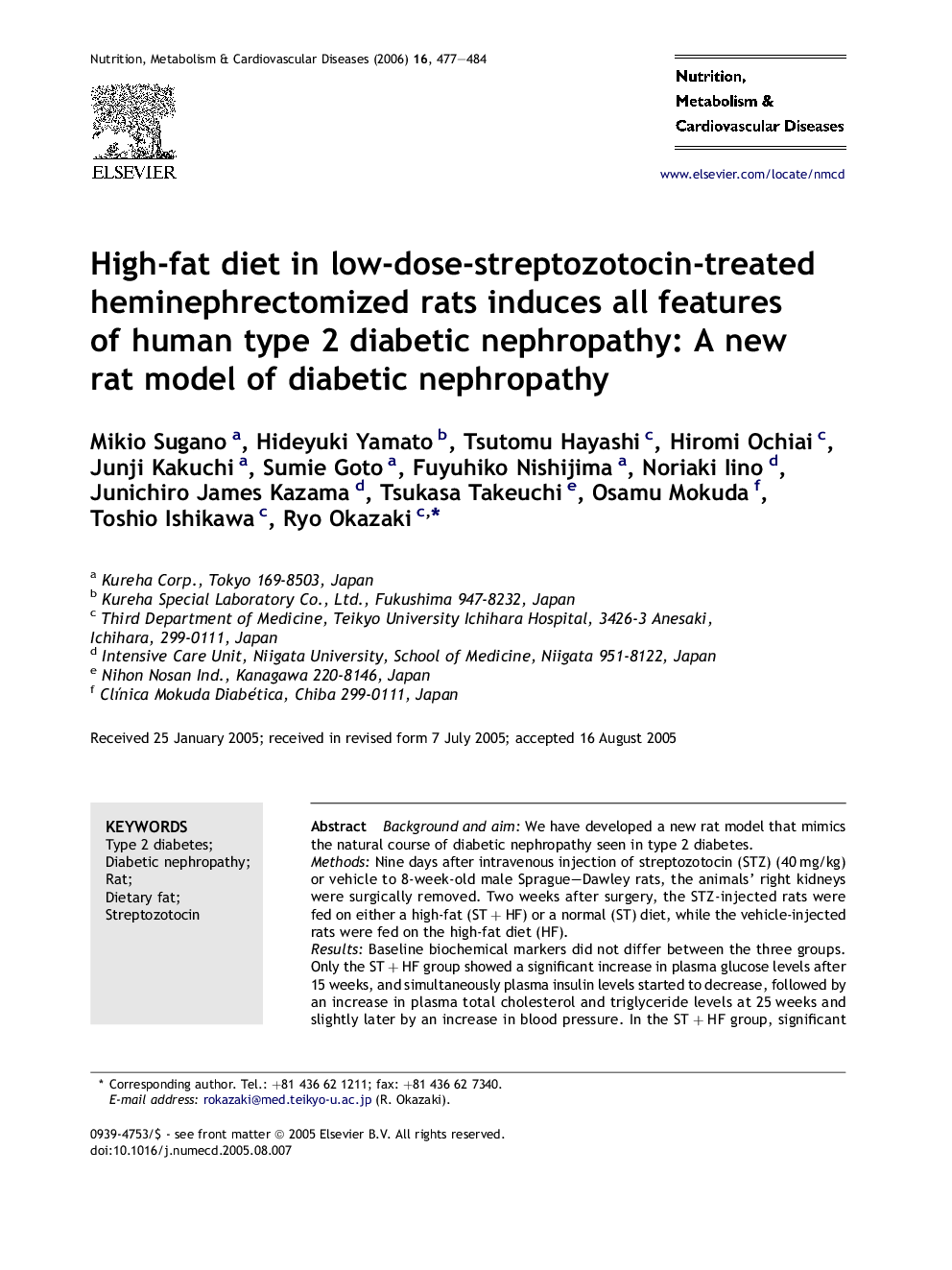| Article ID | Journal | Published Year | Pages | File Type |
|---|---|---|---|---|
| 3003257 | Nutrition, Metabolism and Cardiovascular Diseases | 2006 | 8 Pages |
Background and aimWe have developed a new rat model that mimics the natural course of diabetic nephropathy seen in type 2 diabetes.MethodsNine days after intravenous injection of streptozotocin (STZ) (40 mg/kg) or vehicle to 8-week-old male Sprague–Dawley rats, the animals’ right kidneys were surgically removed. Two weeks after surgery, the STZ-injected rats were fed on either a high-fat (ST + HF) or a normal (ST) diet, while the vehicle-injected rats were fed on the high-fat diet (HF).ResultsBaseline biochemical markers did not differ between the three groups. Only the ST + HF group showed a significant increase in plasma glucose levels after 15 weeks, and simultaneously plasma insulin levels started to decrease, followed by an increase in plasma total cholesterol and triglyceride levels at 25 weeks and slightly later by an increase in blood pressure. In the ST + HF group, significant microalbuminuria was detected at 15 weeks followed by overt proteinuria, both of which were absent in the other two groups. Also in ST + HF, the creatinine clearance rate increased until week 15, and then gradually decreased. Histologically, ST + HF rats showed mesangial expansion at week 25, and diffuse glomerular sclerosis at the end of the experiments.ConclusionThe chronological changes in biochemical, physiological and histological markers in ST + HF rats are reminiscent of human type 2 diabetes and nephropathy. Our new model of type 2 diabetic nephropathy should help us to understand the pathophysiology of the disease and serve to explore measures to prevent and treat diabetic nephropathy.
